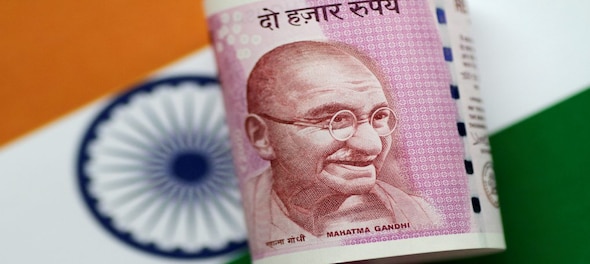
Asian Development Bank (ADB) has lowered India's growth forecast for 2019-20 to 7.2 percent from 7.6 percent estimated earlier due to moderation in global demand and likely shortfall in revenue on the domestic front.
For the just concluded fiscal (2018-19) also, ADB has cut the growth estimate to 7 percent from 7.3 percent projected in December last year.
"Growth slowed from 7.2 percent in fiscal 2017 to 7 percent in 2018, with weaker agricultural output and consumption growth curtailed by higher global oil prices and lower government expenditure."
"Growth is expected to rebound to 7.2 percent in 2019 and 7.3 percent in 2020 as policy rates are cut and farmers receive income support, bolstering domestic demand," ADB said in it's Asian Development Outlook (ADO) 2019 released Wednesday.
This growth will reverse two years of a declining trend as reforms to improve the business and investment climate take effect, the ADO said.
The growth forecast for India has some downside risks such as moderation in global demand as financial conditions tighten, uncertainty arising out of global trade tensions, and the weak economic outlook in industrial countries, the report said.
"On the domestic front, growth could suffer if tax revenue falls short or any disruption affects the ongoing resolution of the twin problems of bank and corporate balance sheets," it added.
India, however, will continue to be one of the fastest-growing major economies in 2019-20, it said.
"India will remain one of the fastest-growing major economies in the world this year given the strong household spending and corporate fundamentals," said ADB chief economist Yasuyuki Sawada.
India has a golden opportunity to cement recent economic gains by becoming more integrated in global value chains, and the young workforce, improving the business climate, a renewed focus on export expansion all support this, Sawada said.
The Manila-based multilateral funding agency said recent policy measures by the government to improve the investment climate and boost private consumption will help India lift economic growth in the current fiscal year and the following.
Income support to farmers, hikes in procurement prices for food grains, and relief to taxpayers earning less than Rs 5 lakh ($7,212) will boost household income.
Declining fuel and food prices is also expected to provide an impetus for consumption. An increase in utilisation of production capacity by firms, along with falling levels of stressed assets held by banks and easing of credit restrictions on certain banks, is expected to help investment grow at a healthy rate.
It also said consumer price inflation is expected to rise to 4.3 percent in 2019-20 and 4.6 percent in 2020-21 as food costs increase slightly and domestic demand strengthens.
"Given that inflation is expected to average around 4 percent in the first half of 2019-20, the central bank (RBI) would have some room for lowering policy rates," it said.
ADB also said India's imports are expected to rise mainly due to stronger domestic demand while a growth slowdown in key export destinations would dent export growth.
The current account deficit is expected to widen a bit to 2.4 percent of GDP in the current fiscal and 2.5 percent in the next fiscal.
"The deficit is expected to be financed comfortably by capital flows, given that India has emerged as an attractive destination for foreign investment," ADO said.
On South Asia, it said the region bucks the trend of slowing growth in Asia. Excluding Asia's high-income newly industrialised economies, growth is expected to slip from 6.4 per cent in 2018 to 6.2 per cent in 2019 and 6.1 per cent in 2020, it said.
In South Asia, growth is expected to edge up by 0.1 percentage point, from 6.7 per cent in 2018 to 6.8 per cent in 2019 and again to 6.9 per cent in 2020, the ADO said.
"Sub-regional averages in South Asia reflect heavy weighting for India, where growth slipped from 7.2 per cent in 2017-18 to 7 per cent in 2018-19 as agriculture and government expenditure both experienced slower growth and as global oil prices rose," it said.
Sub-regional inflation is expected to rise to 4.7 per cent in 2019 and 4.9 per cent in 2020 under pressure from currency depreciation and India's upward adjustment of some agricultural procurement prices to cover higher input costs, it added.
Check out our in-depth Market Coverage, Business News & get real-time Stock Market Updates on CNBC-TV18. Also, Watch our channels CNBC-TV18, CNBC Awaaz and CNBC Bajar Live on-the-go!


BJP holds meeting in Delhi as polling underway for 5th phase
May 20, 2024 4:21 PM
UP Police arrests man after viral videos shows him voting multiple times
May 20, 2024 2:18 PM

